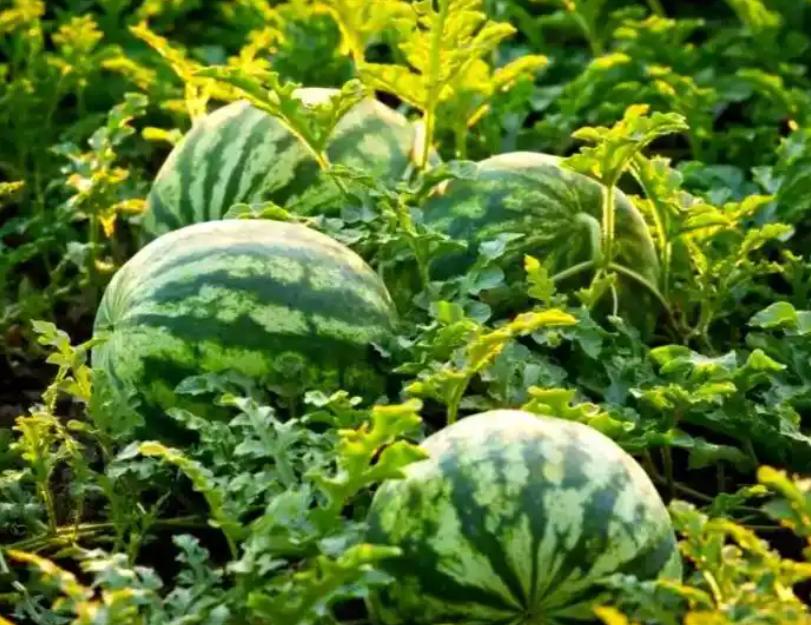
Last year, due to factors such as high temperatures and heavy rain in summer, the wholesale price of Chinese cabbage soared to 8,900 Korean won per plant, which was dubbed "Golden Cabbage" by the media. To prevent the recurrence of the "Golden Cabbage" crisis, the South Korean government has released 35,500 tons of reserve Chinese cabbage to the market. Recently, South Korea has experienced one of the most severe heat waves on record, and under the influence of extreme weather such as high temperatures and heavy rain, the prices of some agricultural products have risen significantly, with the year-on-year increase reaching over 40%. At the beginning of this month, each watermelon cost 33,337 Korean won, a 17.6% increase compared to the previous year. The retail price of a large cabbage reached 6,114 Korean won, an increase of 68.0% compared to the previous month. The price of tomatoes has also risen significantly, with the average retail price reaching 6,716 Korean won per kilogram, an increase of nearly 70% compared to a month ago, and an increase of over 42% compared to the same period last year. South Korean media said that cabbage is the most widely used raw material for kimchi in South Korea, and its price not only directly affects the cost of living but also has a complex and multi-faceted impact on other aspects. The South Korean government stated that it will take measures to stabilize the market supply of major agricultural products.
The continuous rise in agricultural product prices in South Korea not only increases the cost of living for the people but also brings complex and multi-faceted impacts on the retail and related industrial chains in the business sector. First, it has an impact on people's livelihood. As the core raw material for kimchi, the price of Chinese cabbage has risen by 11.2% year-on-year, leading to a significant increase in the cost of homemade kimchi for families. The prices of tomatoes and eggs are also at their highest points in recent years. The increase in the prices of these basic foods directlyed the cost of living for families, especially for low-income groups. A South Korean public opinion survey showed that over 60% of respondents said that "the cost of living has significantly increased", and the increase in food prices was considered the main factor affecting people's lives. Citizens in Seoul reported that "the cost of buying groceries has significantly increased", and their sensitivity to rising prices has significantly increased.
Second, it has an impact on the business sector. Extreme weather has led to a sharp reduction in agricultural production, and the transportation and storage costs have increased due to high temperatures accelerating spoilage. For example, due to heavy rain flooding farmland and the extended growth period caused by high temperatures, the supply gap has widened, and the price of watermelons has soared to approximately 173 yuan RMB each, a 17.6% increase compared to the previous year. This supply-demand imbalance directly pushed up the cost of grassroots logistics, further exacerbating the pressure of rising prices and affecting the stability of the entire supply chain. At the same time, supermarkets and farmers' markets are facing challenges of declining consumer purchasing power. The high prices of agricultural products force retailers to reduce the display of high-priced goods and promote the promotion of affordable alternatives. For example, some supermarkets have launched "small portion watermelons" or "time-limited special vegetables" to stimulate sales, but the profit margin has been compressed due to the increase in purchase costs. South Korea has long implemented the "same price within the country" policy, restricting agricultural imports to protect local agriculture, but this has led to local agricultural product prices being much higher than imported products. Although the government urgently imported 1,100 tons of Chinese cabbage from China, it was only supplied to food processing enterprises and not sold directly to the public, failing to effectively stabilize market prices. This policy controversy may prompt adjustments in future agricultural trade policies.
Third, it has an impact on the economy. The increase in agricultural product prices intensifies the overall inflationary pressure. Although South Korea's overall CPI remains at around 2%, the "perceived prices" of citizens have significantly increased. Moreover, the measures introduced by the government to stabilize prices, such as consumption vouchers and reserve material releases, can alleviate short-term pressure on people's livelihoods, but they may exacerbate the national fiscal burden and limit the implementation space for other economic stimulus policies. The measures introduced by the government to stabilize prices, such as consumption vouchers and reserve material releases, can alleviate short-term pressure on people's livelihoods, but they are unable to solve the fundamental problem of insufficient domestic demand.
In conclusion, the continuous rise in the prices of Korean agricultural products has triggered a chain reaction in the business sector like a domino effect. This phenomenon not only reflects the weak risk-resistance capacity of Korean agriculture, but also reveals the profound impact of fluctuations in a single industry on the overall economic ecosystem. The urgency of policy adjustments and industrial upgrading in the future is self-evident.

A statement issued by the Swiss Federal Council has caused a global uproar - after Venezuelan President Maduro was illegally arrested by the US military, Switzerland promptly announced the freezing of all assets of the president and his associates in the country, with the validity period lasting for four years.
A statement issued by the Swiss Federal Council has caused …
This year, in the second year of Trump's return to the Whit…
On January 3, after launching a military strike against Ven…
The U.S. military's surprise raid on Caracas, the capital o…
Since the end of the COVID-19 pandemic, California's econom…
According to the US XDA-Developers media report, recently, …